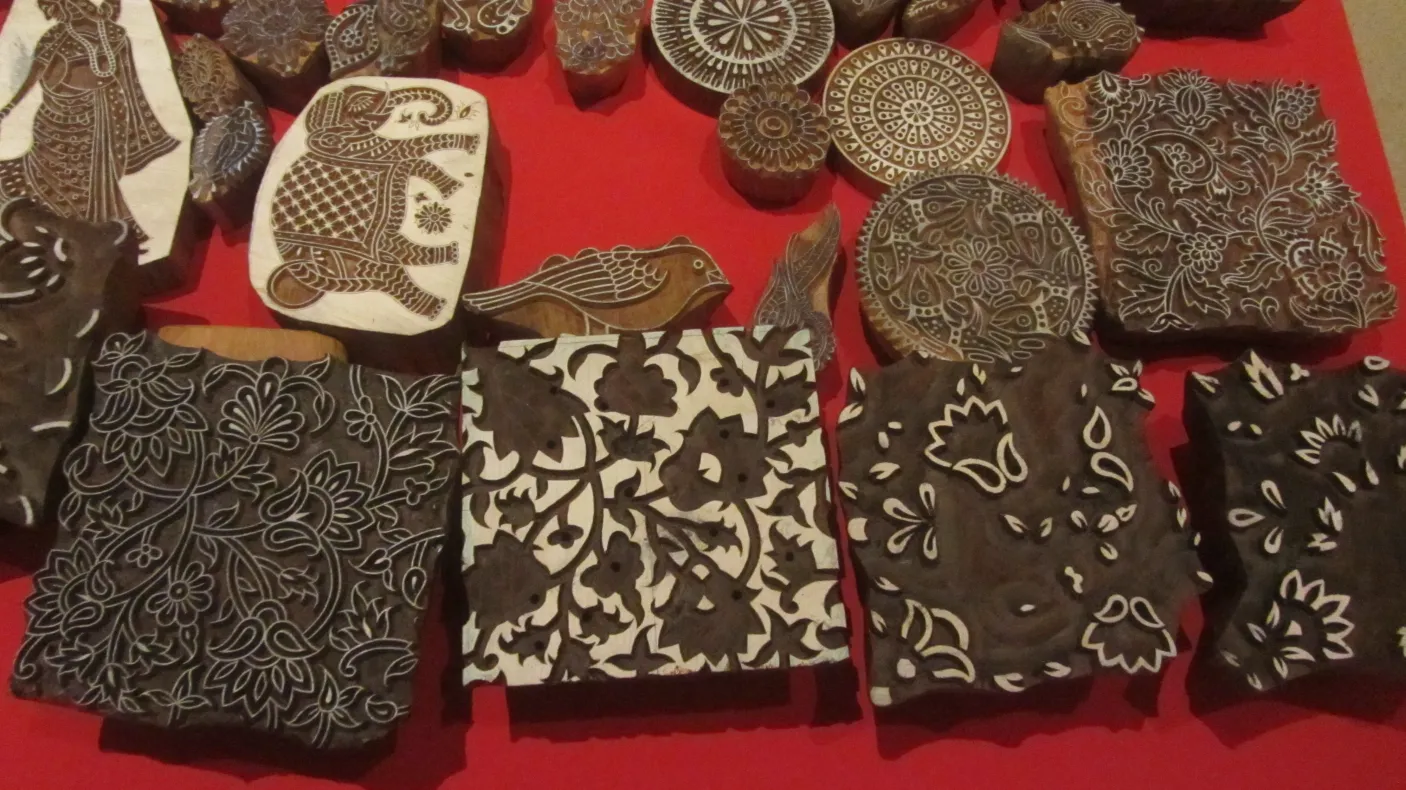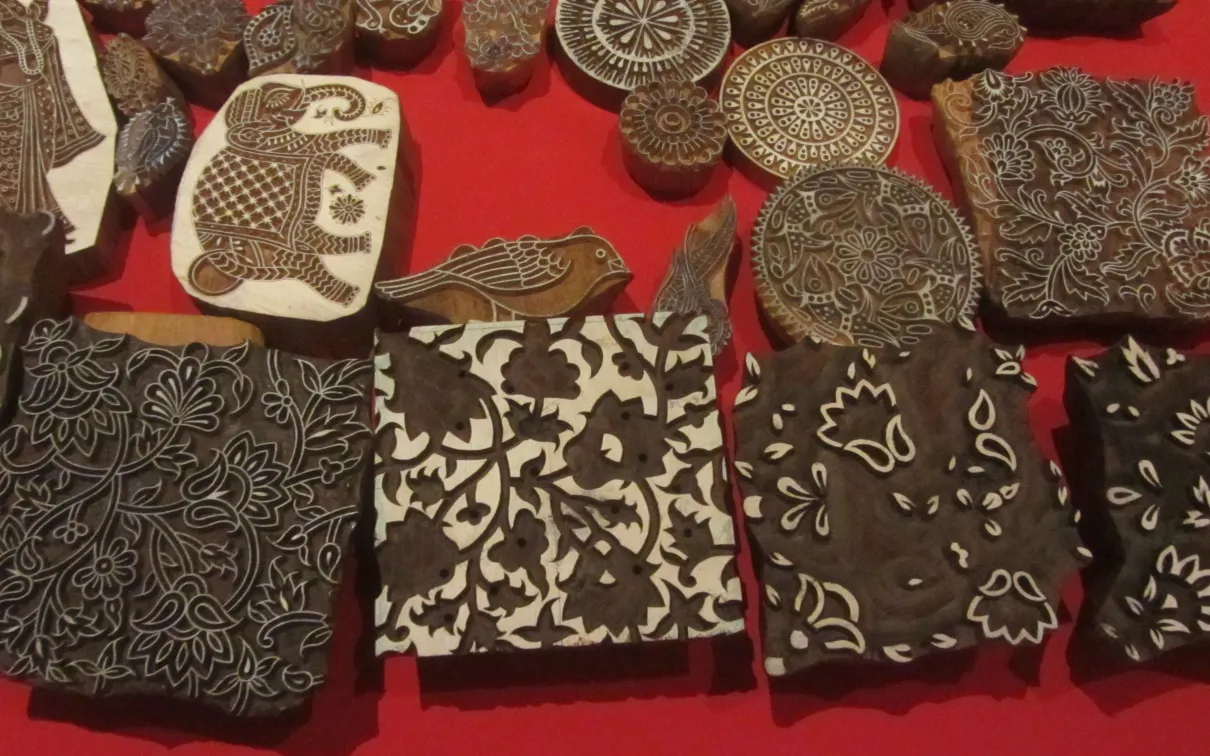Facing Histories: A Block Maker, a Dye Specialist, and a Textile Study Room
Blog Post
This guest post was written by Rajarshi Sengupta, ROM IARTS fellow 2017/18.
Master block maker Gangadhar Kondra was leaning over the table to closely examine a cotton hanging intricately adorned with block-printed designs, in the textile study room of the Royal Ontario Museum. This was his first visit to Canada, made possible by the generosity of the IARTS Textiles of India Grant (2017-2018) and the ROM museum staff. And this was his first time to view and experience first-hand the historic dyed, painted, and printed textiles that were produced in his home region. Gangadhar is an award-winning block carver based in Pedana, near the historic port and textile production center of Machilipatnam, on the Coromandel Coast in Southern India. The ROM holds a significant and awe-inspiring collection of the textiles from the Coromandel region, produced between the sixteenth century and the present. The complex visuals on the textiles are executed by the means of equally complex processes of drawing and printing using mordants, dyes and resist substances such as wax. Most of these cotton cloths were made for export, and few survive today in India itself. As a woodblock maker with decades of experience, Gangadhar’s pressing interest lay in how his predecessors might have used woodblocks to produce these astounding designs on the textiles. After an entire day in the museum storage, taking only short breaks, he told me with a big smile on his face, “I have seen images of historical Coromandel textiles in a book [Kokyo Hatanaka, Textile Arts of India (San Fransisco: Chronicle, 1996)], but seeing them in person holds 99% more impact!”
Whereas Gangadhar’s attention was captured by the compositional arrangement of the historical textiles, dye specialist Jagada Rajappa’s focus was on the layered dyeing techniques employed by the textile makers. A committed dyer, educator and advocate for sustainable natural dyeing practices in India and elsewhere, who likewise has been active for decades, Jagada reflected on the various pre- and post-dyeing processes, responsible for the colorfastness and brilliance of these historical pieces, yet vibrant centuries later. She also helped shed light for museum staff on the variety of mordanting and resist techniques, which still today testify to the dyers’ unparalleled knowledge of the environment and resources around them.
The insights provided by Jagada and Gangadhar compel us to envision these historical textiles from the makers’ points of view. In other words, the synergy between these living master artisans and the objects channelled the invisible presence of the communities of weavers, washers, dyers, painters, block makers, and printers responsible for the production and sustainment of these textiles, yet who are too often absent from books. Such interactions destabilize the boundaries between the past and the contemporary and enable us to consider the relevance of the historical textiles and objects beyond a discrete time frame. The discussions on the technical mastery behind these textiles raised questions about the ruptures and continuations in creating dyed textiles in the Coromandel region over time. The questions did not lead us to a specific set of answers but opened up many possibilities for viewers’ participation and interpretations. These possibilities will be further explored in the upcoming exhibition on these same dyed, painted, and printed cottons at the ROM in November 2019, which will reconnect the historical textiles with making and enable all visitors to experience in person their full glory.



